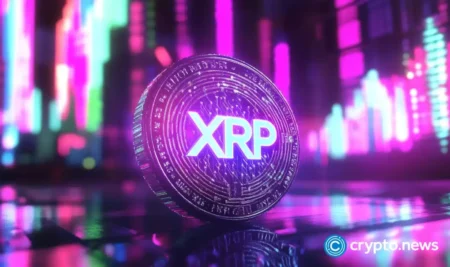As the crypto landscape evolves, restaking has emerged as one of the hottest narratives of 2025. In this interview, Lucio Tato, a core contributor at Meta Pool, shares his insights on how the protocol is embracing multi-chain staking, enhancing decentralization, and preparing for the shifting economics of validator incentives. From liquid staking innovations to validator onboarding on NEAR, Tato outlines a vision where accessibility and resilience go hand in hand.
Restaking is a trending narrative in crypto, how are you adapting to or integrating restaking mechanisms?
Meta Pool has been following the restaking narrative. We have a mechanism in Solana for Leveraged staking and restaking. Right now you can stake SOL, mSOL, jitoSOl, bSOL and hubSOL, and via leveraged staking you get around 9% APY (+2% over other LSTs). That staking architecture is not only providing this boost, but is also ready to reap any extra-yield solana restaking platforms can provide.
Can you explain how Meta Pool’s approach to liquid staking stands out from protocols like Lido or EigenLayer?
Meta Pool’s liquid staking for Ethereum has an interesting architecture: it accrues the staking rewards every second. Meaning you could stake ETH only for a few hours and you will get staking rewards. Other platforms like Lido only accrue rewards daily. Also we’re using distributed validator services via SSV, so the protocol itself is resilient. It is designed with multiple layers of protection, so the staked ETH is safe. We went through a real-world, high-stakes fire-test a few weeks ago. We had a vulnerability exploited, but thanks to the architecture of the contract and a controlled liquidity, the losses were minimal, that is only part of the liquidity in Uniswap representing only 0.5% of the TVL. All the staked ETH remained safe during the ordeal. For more info you can check the blog in metapool.app
What is your view on the sustainability of staking yields in a multi-chain world?
It is, and it will continue to be a multi-chain world! Our focus is in making it easy for everyone to participate in staking in multiple chains and not only help with decentralization but also reap the staking rewards. Our multi-chain approach mitigates reliance on a single chain’s economics, so we believe our users are covered and they can always compare rewards and decide on our front web page.
Which chains or ecosystems do you currently support or plan to expand into next?
Meta Pool currently supports NEAR, Ethereum, Solana, Story, and ICP (DFinity). We’re actively exploring other blockchains like Sui, and plan to support Layer 2 solutions like Arbitrum and Optimism. Future targets could include Polkadot for interoperability and Cosmos-based chains for cross-chain synergy, aligning with our mission to democratize staking access across diverse ecosystems, especially for users in emerging markets.
How do you manage validator decentralization and security in your staking model?
Validator decentralization is core to Meta Pool’s model. We select validators through an automated process, balancing yield and decentralization. To prevent centralization, we cap validator stake allocations and encourage smaller, independent validators to participate, increasing the Nakamoto coefficient and enhancing network resilience.
Right now we have onboarded dozens of solo-validators via our node studio program, that facilitates creating and running a validator in the NEAR blockchain, with a few clicks and only $30 per month. We provide the initial stake, to the operator starts with a break-even equation or even a small profit!
Is there a plan to incentivize long-term staking vs. short-term flipping of staking tokens?
Yes, we plan to incentivize long-term staking through tiered reward structures and potential governance benefits. Stakers locking NEAR for extended periods receive boosted yields and increased voting power in the DAO, encouraging commitment. The program is planned, not implemented yet. Given that there are proposals in the NEAR ecosystem to reduce staking rewards, we want to be ready for our community in case those proposals are passed, in order for them to keep the same level of rewards until the proposal effects stabilize. Reducing inflation is normally good for the native token in the medium and long term but also reduces rewards in the short term.
Read the full article here










